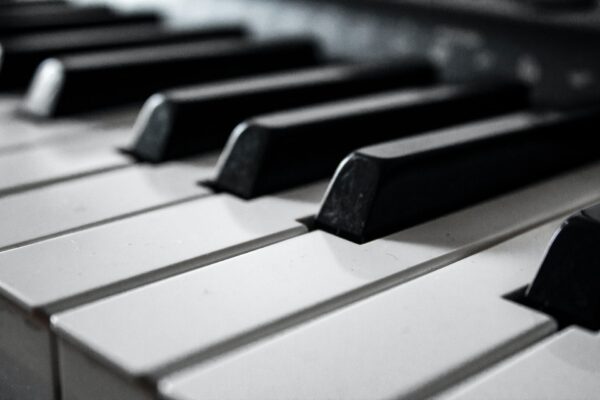Usually feet stomp, but boy could these hands stomp too. Two small pudgy hands “stomped,” not on the floor, but on precious ivory and ebony piano keys. They were the sticky, clammy hands of my younger toddler son, who, in his earnest desire to play the heirloom piano, slammed his palms on all 88 keys. He “played” the keyboard with giddy joy, bohemian freedom, and a full diaper, thinking he was composing the next unforgettable concerto. He played the high notes and the lows, the white keys and the black. It was a “baby grand” on another level. And after his “performance,” he looked up at me, scanning my face with his big eyes for some sign of approbation. I gave him a slight nod and breathed an impressed “huh” as best as I could muster, with a raised eyebrow and a one-sided smile.
Contrast this to my older son who practiced the piano daily. Though the songs he played were melodic, his attitude during practice time mimicked the dissonance of my younger son’s magnum opus. Just as his long line of ancestors kicked and screamed against their parents making them practice, he followed the Korean tradition of making his own parents miserable, claiming he was imprisoned, enslaved, and invoking claims of injustice, oppression, and outrage. Thanks to the forbearance and diligence of his mother though, he persevered through the pain of practicing, learning music theory, studying sight reading, and memorizing fingering charts, chords, and scales.
One day I saw him at our piano tinkering with the notes and creating his own tunes. He was playing with both hands and experimenting with harmonies, rhythms, and tones. For a while, he was trying to reproduce songs from church and school, but later he ventured out with his own musical originality. Now he continues the tinkering, but with his violin, ukulele, and recorder. I don’t know where his musicality will lead him but, for now, he enjoys the disciplined freedom of being a musician, and a good one at that.
Both boys experienced freedom, albeit in different ways and at different stages of their lives. One illustrates an anarchic freedom that is undisciplined, chaotic, even a bit violent. Disorder and anomie are understood as liberty, but really result in unfulfilled true potential and individuality. Though many may tolerate this type of freedom, it merely results in loud noise, sticky keys, and dirty diapers.
The second illustrates a freedom that emerges from discipline and defined boundaries. Habits must be overcome, ignorance dispelled through education, and inability overrun by repetition. But stopping here will surely result not in freedom, but education gone awry. Basic piano playing skills result in something much larger than the instrument itself. The objective is not to practice and learn the mechanics of music. Rather, it’s when the perseverance and hours of parenting pays off and your son learns the freedom of expression, creativity, communication, art, imagination, inspiration, originality, ingenuity, enthusiasm, emotion, and individuality! It is in the midst of boundaries that true expression, freedom, and identity are discovered. In like manner, we have the opportunity to find our deepest forms of expression, freedom, and identity in our relationship with and service to God. Today under the banner of freedom and liberty, many seek to have their own identities, resulting in hands slamming down on keyboards to produce loud, dissonant chords. If we follow through with what the Lord intended for us, as revealed in Scripture, we will experience the joy of creating new melodies for Him. For some, this means finding ourselves to be beautifully created; for others, it means embracing the racial, gender, and sexual identities that God intended; and for all, it means finding purpose in ministry and service.



